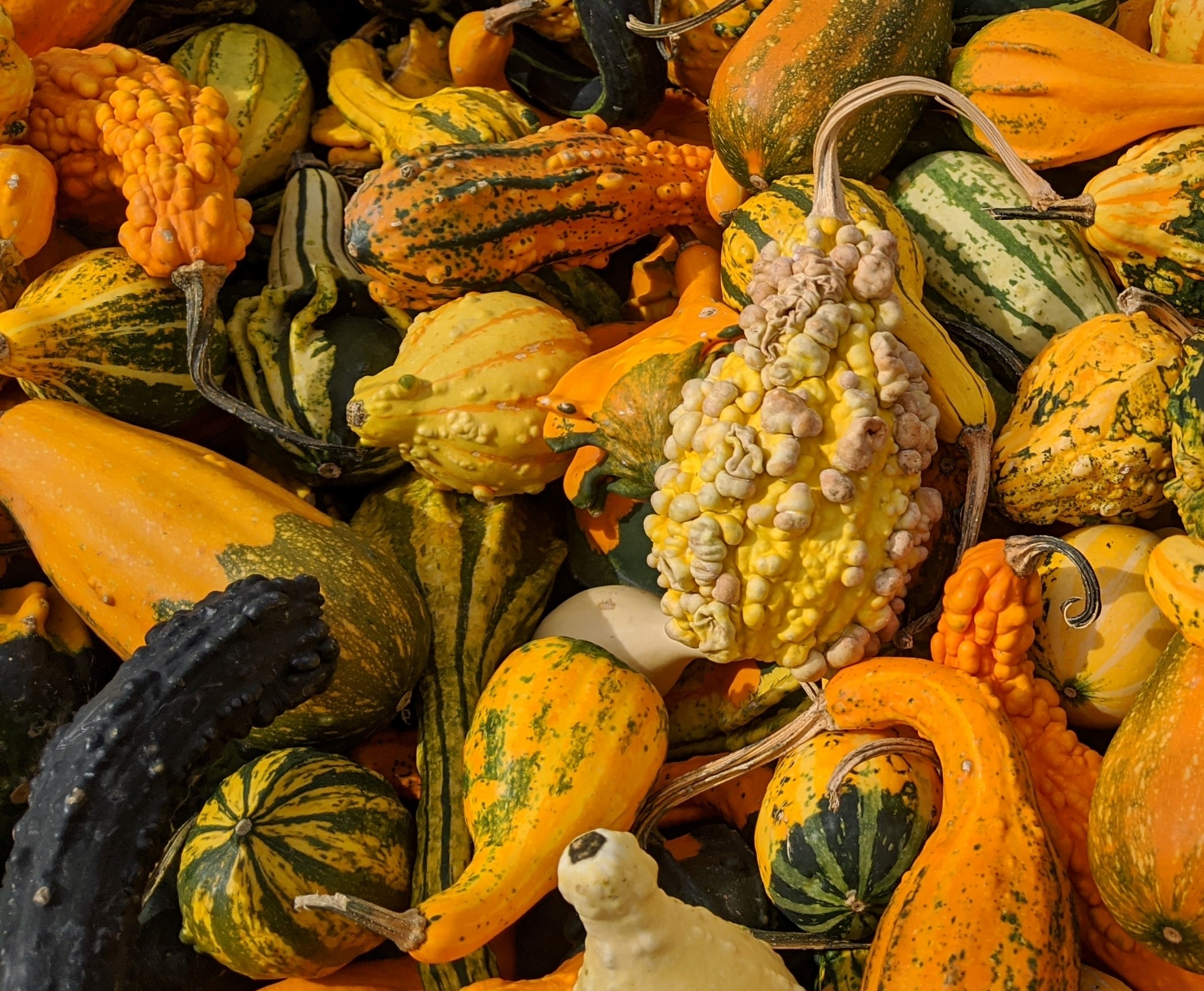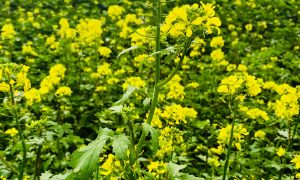Description
Yields and average of 110 “Small Decorative Warted Mix” gourds per packet after 80 to 120 days. At least 4 different varieties guaranteed to be in each packet. Varieties are randomly selected and each packet can contain up to 9 different types of small warted decorative gourds.
Small decorative warted gourds are a type of gourd that are often used for ornamental purposes rather than for eating. These gourds are typically small in size, usually no larger than a few inches in diameter, and are characterized by their bumpy, warty texture. The bumps and warts on the gourds can vary in size, shape, and color, with some gourds featuring small, uniform bumps and others featuring larger, irregular warts.
The color of small decorative warted gourds can also vary widely, with shades of green, yellow, orange, and even white or cream being common. Some gourds are solid in color, while others feature stripes or other patterns.
Overall, small decorative warted gourds have a unique and whimsical appearance that makes them a popular choice for fall and Halloween decor, as well as for use in floral arrangements and centerpieces. While they are not typically used for cooking, they are edible and can be used in some culinary applications, such as for making pickles or preserves.
How to Grow Small, Decorative Warted Gourds
Growing small decorative warted gourds is a fun and rewarding project that can be done in your own backyard or garden. Here are some general steps to get you started:
- Choose a sunny location: Small decorative warted gourds require a lot of sunlight to grow and thrive. Choose a spot in your garden that gets at least 6-8 hours of direct sunlight per day.
- Prepare the soil: Gourds prefer soil that is rich in organic matter and well-draining. Prepare the soil by adding compost or well-rotted manure to the planting area.
- Plant the seeds: Small decorative warted gourds can be planted directly in the soil once the danger of frost has passed and the soil has warmed up. Plant the seeds about an inch deep and 2-3 feet apart.
- Provide support: As the gourds grow, they will need support to keep them from touching the ground and getting damaged. You can provide support by using a trellis or by training the vines to grow up a fence or other support structure.
- Water and fertilize regularly: Gourds require regular watering and fertilization to grow well. Water them deeply once or twice a week, and fertilize them with a balanced fertilizer every 2-3 weeks.
- Harvest the gourds: Small decorative warted gourds are ready to harvest when the vines start to die back and the gourds have reached their full size and color. Cut the gourds from the vine with a sharp knife, leaving a few inches of stem attached.
With these steps, you should be able to grow your own small decorative warted gourds and enjoy their unique and whimsical appearance.
FAQ for Small Decorative Warted Gourds:
Q: What are small decorative warted gourds? A: Small decorative warted gourds are a type of gourd that are often used for ornamental purposes rather than for eating. They are characterized by their small size and distinctive bumpy, warty texture.
Q: What are small decorative warted gourds used for? A: Small decorative warted gourds are often used for fall and Halloween decor, as well as for use in floral arrangements and centerpieces. They can also be used as a decorative accent in home decor or as a gift.
Q: Can small decorative warted gourds be eaten? A: While small decorative warted gourds are not typically used for cooking, they are edible and can be used in some culinary applications, such as for making pickles or preserves.
Q: How do I grow small decorative warted gourds? A: To grow small decorative warted gourds, choose a sunny location, prepare the soil with organic matter, plant the seeds directly in the soil, provide support for the vines, water and fertilize regularly, and harvest the gourds when they are fully mature. See the section above for more in-depth instructions.
Q: What is the best time to plant small decorative warted gourds? A: Small decorative warted gourds should be planted in the spring after the danger of frost has passed and the soil has warmed up.
Q: How long does it take for small decorative warted gourds to mature? A: Small decorative warted gourds typically take 80-120 days to mature, depending on the variety and growing conditions.
Q: How should I store small decorative warted gourds? A: Small decorative warted gourds should be stored in a cool, dry place with good air circulation to prevent mold or rot. They can be stored for several months if properly cured and stored.
Common Pests of Small, Decorative Warted Gourds and Suggestions for How to Deal With Them
Small decorative warted gourds, like other plants, can be susceptible to a variety of pests. Here are some common pests and solutions for controlling them:
- Squash bugs: Squash bugs are small, flat, brown bugs that can damage the leaves and fruit of small decorative warted gourds. To control squash bugs, regularly inspect the plants and remove any visible bugs by hand. You can also spray the plants with insecticidal soap or neem oil.
- Vine borers: Vine borers are a type of moth larvae that burrow into the vines of small decorative warted gourds, causing damage and eventually killing the plant. To prevent vine borers, wrap the base of the vines with aluminum foil or row cover material to prevent the moths from laying their eggs on the vines. You can also use beneficial nematodes to control vine borers.
- Cucumber beetles: Cucumber beetles are small, yellow or green beetles that can feed on the leaves and flowers of small decorative warted gourds. To control cucumber beetles, use row cover material to prevent the beetles from getting to the plants, and use insecticidal soap or neem oil to kill any beetles that do get through.
- Aphids: Aphids are small, soft-bodied insects that can suck the sap from the leaves and stems of small decorative warted gourds. To control aphids, spray the plants with a strong jet of water to knock the aphids off, or use insecticidal soap or neem oil.
- Spider mites: Spider mites are tiny, red or brown mites that can cause yellowing and discoloration of the leaves of small decorative warted gourds. To control spider mites, spray the plants with a strong jet of water to knock the mites off, or use insecticidal soap or neem oil.





Reviews
There are no reviews yet.